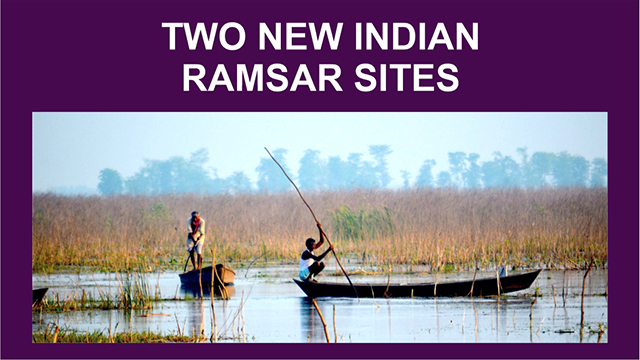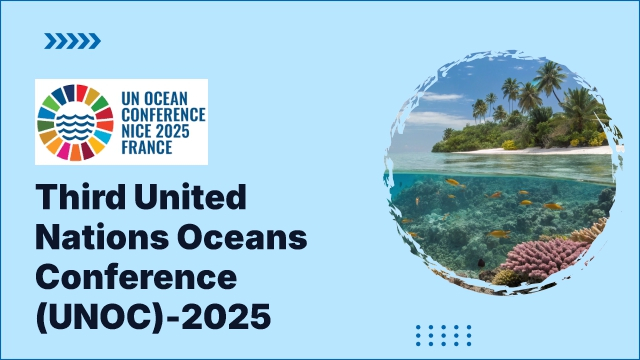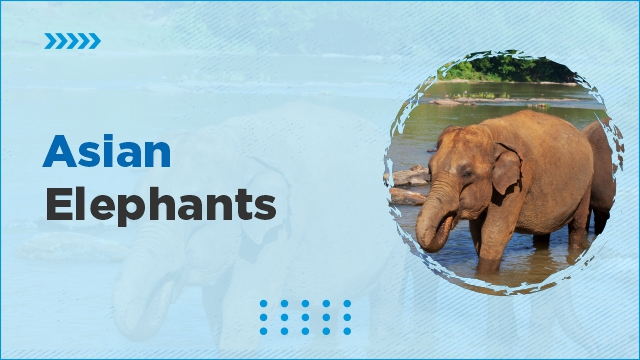Comprehensive News & Analysis
10:54:04
Two new Indian Ramsar Sites
Context
Kabartal Wetland of Bihar and Asan Conservation Reserve of Uttrakhand have been designated as Ramsar sites, making them “Wetlands of International Importance”. Earlier in 2020, India designated ten more wetlands as a Ramsar sites, taking the total number from 27 to 37. With adding 2 more, the total number of Ramsar sites increased to 39, which is highest in South Asia.
Asan Conservation Reserve
- Asan Conservation Reserve is a 444-hectare stretch of the Asan River flowing down to its confluence with the Yamuna River in Dehradun district of Uttarakhand.
- It's the first Ramsar site in Uttarakhand.
- The damming of the River by the Asan Barrage in 1967 resulted in siltation above the dam wall, which helped to create some of the Site’s bird-friendly habitats.
- Asan Conservation Reserve cleared 5 out of the 9 requirements required to be declared a Ramsar site and listed as a Wetland of International Importance.
- The criteria cleared by Asan Conservation Reserve to get Ramsar site tag include that
- It supports vulnerable, endangered, or critically endangered species,
- It supports populations of plant and/or animal species important for maintaining the biological diversity,
- It supports plant and/or animal species at a critical stage in their life cycles,
- It is an important source of food for fishes, spawning ground, nursery and/or migration path on which fish stocks, either within the wetland or elsewhere, depend.
- These habitats host approximately 330 species of birds including the critically endangered red-headed vulture (Sarcogyps calvus), white-rumped vulture (Gyps bengalensis) and Baer’s pochard (Aythya baeri).
- Asan receives approximately 40 migratory species which includes Rudy Shelduck, Common coot, Gadwall, Kingfisher, Indian cormorant, Baer’s pochard, Northern pintail, Bar-headed goose.
- Other non-avian species present includes 49 fish species, one of which being the endangered Putitora mahseer (Tor putitora) and the fish uses the site for feeding, migration and spawning.
- Asan is habitat of many rare and endangered species like the Ruddy Shelduck, Red Crested Pochard, among others. Several endangered birds are found here and some even migrate to the Reserve which making it an ecologically important site.
Kabartal Wetland
- Kabartal Wetland, which is known as Kanwar Jheel.
- It covers 2,620 hectares of the Indo-Gangetic plains in the Begusarai district of Bihar.
- Besides providing livelihood opportunities to local communities it also acts as a vital flood buffer zone for the region.
- Significant biodiversity is present in Kabartal Wetland, with 165 plant species and 394 animal species recorded which includes 221 bird species. It is also a valuable site for fish biodiversity with over 50 species documented.
- There are 5 critically endangered species which inhabit the site, including
- 3 vultures - the red-headed vulture (Sarcogyps calvus), white-rumped vulture (Gyps bengalensis) and Indian vulture (Gyps indicus)
- 2 waterbirds - the sociable lapwing (Vanellus gregarius) and Baer’s pochard (Aythya baeri).
- Major threats to the Site include water management activities such as drainage, water abstraction, damming and canalization.
About Ramsar Site
- Ramsar Convention on Wetlands is an intergovernmental treaty ratified in 1971 in the Iranian city of Ramsar, on the southern shore of the Caspian Sea.
- For India it came into force on 1st February, 1982. Wetlands of international significance are declared Ramsar sites.
- The Convention’s mission is “the conservation and wise use of all wetlands through local and national actions and international cooperation, as a contribution towards achieving sustainable development throughout the world”.
- The Montreux Record is a register of wetland sites on the List of Wetlands of International Importance, where changes in ecological character have occurred, occurring, or are likely to occur as a result of technological developments, pollution or other human interference.




